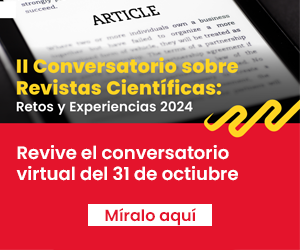Predictive factors of successful rehabilitation in patients with lower limb amputation attended at a rehabilitation institute
DOI:
https://doi.org/10.20453/rmh.v35i3.5761Keywords:
Rehabilitation, surgical amputation, artificial limbsAbstract
Objective: To determine predictive factors of successful rehabilitation in patients with lower limb amputation who use a prosthetic device. Methods: A retrospective observational and non-probabilistic study was carried out among 70 patients who underwent transfemoral (AK) or transtibial amputation (BK) of vascular, oncologic, or traumatic origin at the Instituto Nacional de Rehabilitación “Dra. Adriana Rebaza Flores” AMISTAD PERU-JAPON, Lima-Peru, from 2018 and 2019. Patients were interviewed, and clinical charts were reviewed. Successful rehabilitation was evaluated using Houghton’s instrument. Results: 81.42% were males; the mean age was 48.76 ± 15.19 years; 35.71% had between 48 and 57 years of age. Successful rehabilitation was associated with age (p<0.01), BK amputation (p<0.001), traumatic origin (p=0.014), and absence of comorbidities (p<0.04). The only predictive factor of successful rehabilitation was BK amputation [OR=2.84, p<0.02). Conclusions: Factors associated with successful rehabilitation were age below 48 years, BK amputation, traumatic origin, and fewer comorbidities, but the only determinant was the level of amputation.
Downloads
References
Quiroz CQ, Zapata AJ, Jimenez MTDO, Bolaños PAV. Estudio descriptivo de condiciones del muñón en personas usuarias de prótesis de miembros inferiores. Rev Col Med Fis Rehab. 2015;25(2): 94-103.
Organización Mundial de la Salud. Informe mundial sobre la diabetes; 2016. Ginebra [Internet]. [citado 12 de octubre de 2023]. Disponible en: https://iris.who.int/bitstream/handle/10665/254649/9789243565255-spa.pdf;jsessionid=2E11B18CBCE287AC4812F3D1B3470A71?sequence=1
Farro L, Tapia R, Bautista L, Montalvo R, Iriarte H. Características clínicas y demográficas del paciente amputado. Rev Méd Hered. 2012;23(4):240-3. Doi: 10.20453/rmh.v23i4.845.
Ocampo ML, Henao LM, Vásquez L. Amputación de miembro inferior: Cambios funcionales, inmovilización y actividad física. [Documento de Investigación]. Colombia: Universidad del Rosario. 2010; 42:1-26. Doi: 10.48713/10336_3793.
Imam B, Miller WC, Finlayson HC, Eng JJ, Jarus T. Incidence of lower limb amputation in Canada. Can J Public Health. 2017;108(4):374-e380.
Instituto Nacional de Rehabilitación “Dra. Adriana Rebaza Flores” Amistad Perú- Japón. Departamento de Investigación, Docencia y Rehabilitación Integral en Amputados, Quemados y Trastornos Posturales. Documento técnico: Protocolo de atención en rehabilitación integral del paciente amputado en el Instituto Nacional de Rehabilitación “Dra. Adriana Rebaza Flores” Amistad Perú- Japón. 2021. [Citado el 4 de agosto de 2023]. Disponible en: https://www.gob.pe/institucion/inr/normas-legales/2164777-132-2021-sa-dg-inr
Instituto Nacional de Rehabilitación “Dra. Adriana Rebaza Flores” Amistad Perú- Japón. Departamento de investigación, docencia y rehabilitación integral en amputados, quemados y trastornos posturales. Guía de práctica clínica de manejo de rehabilitación integral del paciente con amputación [Internet]. [citado 28 de noviembre de 2022]. Disponible en: https://www.gob.pe/institucion/inr/normas-legales/4772911-296-2010-sa-dg-inr
Moreno JA, Moreno I, Casallo M, Maitín V, Cid C, Vidal C. Factores relacionados con el éxito en la protetización de amputados de extremidad inferior de etiología vascular. Rehabilitación. 2022;56(3):188-94. Doi: 10.1016/j.rh.2021.11.005.
Gutiérrez-Fernández M, Carrasco-De Andrés D, Salmerón-Febres LM, González-Herrera L, Jiménez-Brobeil S. Diferencias según el género en el perfil clínico de riesgo del paciente amputado de miembro inferior. Cir Cir. 2021; 89(4): 490-496. Doi: 10.24875/CIRU.20000649
Moreno-López J, Moreno-Palacios JA, Esteban-Román S, Lamas IM, Petriman M, Pintor-Ojeda A. Utilización de la prótesis en amputados de miembro inferior. Rehabilitación. octubre de 2017;51(4):220-5. DOI: 10.1016/j.rh.2017.05.001.
Matamoros-Villegas A, Plata-Contreras J, Payares-Álvarez K. Correlación entre pruebas y escalas de valoración funcional en el seguimiento a la adaptación protésica de personas con amputación de miembro inferior. Rehabilitación. 2022; 56(2):116-24. DOI: 10.1016/j.rh.2020.11.001.
Muniesa JM, Pou M, Marco E, Boza R, Guillén A, Duarte E, et al. Calidad de vida en pacientes con amputación de extremidad inferior. Rehabilitación. 2009; 43(1):28–33. Doi: 10.1016/s0048-7120(09)70393-7.
Secco MZ, Balbi LL, Pereira MSC, Santos Costa W, Barros ARSB, Registro Fonseca MC. Convergent construct validity of the Brazilian version of the Houghton scale. Prosthet Orthot Int. 2024 Feb 20. doi: 10.1097/PXR.0000000000000329.
Qaarie MY. Life expectancy and mortality after lower extremity amputation: Overview and analysis of literature. Cureus. 2023; 15(5):e38944. DOI: 10.7759/cureus.38944.
Hamamura S, Chin T, Kuroda R, Akisue T, Iguchi T, Kohno H, et al. Factors Affecting Prosthetic Rehabilitation Outcomes in Amputees of Age 60 Years and Over. J Int Med Res. 2009;37(6):1921-7. DOI: 10.1177/147323000903700630.
María José Espinoza V, Daniela García S. Niveles de amputación en extremidades inferiores: repercusión en el futuro del paciente. Rev Med Clin Condes. 2014;25(2):276-80. DOI: 10.1016/S0716-8640(14)70038-0.
Fuentes-Aguilar RQ, Madrigal VC. Análisis de la marcha en voluntarios con amputación transtibial usando sensores Kinect. Memorias del Congreso Nacional de Ingeniería Biomédica. 30 de noviembre de 2021 [Citado el 18 de octubre del 2023];8(1):254-7. Disponible en: https://memoriascnib.mx/index.php/memorias/article/view/888
Gómez M. Adherencia al uso de a prótesis de los pacientes amputados vasculares de miembros inferiores, mayores de 50 años. Tesis de licenciatura en kinesiología. Mar de Plata, Argentina: Universidad FASTA; 2015.80 pp. Disponible en: http://redi.ufasta.edu.ar:8082/jspui/handle/123456789/208
Flores LV. Factores relacionados con la adherencia al tratamiento de rehabilitación de los pacientes con Diabetes Mellitus tipo 2 con amputación de miembro inferior. Rev Med Hered. 2023; 34(3):117-23. DOI: 10.20453/rmh.v34i3.4921.
Karaali E, Duramaz A, Çiloğlu O, Yalın M, Atay M, Aslantaş FÇ. Factors affecting activities of daily living, physical balance, and prosthesis adjustment in non-traumatic lower limb amputees. Turk J Phys Med Rehabil. 2020;66(4):405-12. DOI: 10.5606/tftrd.2020.4623.
Font-Jiménez I, Llaurado-Serra M, Roig-Garcia M, De Los Mozos-Perez B, Acebedo-Urdiales S. Retrospective study of the evolution of the incidence of non-traumatic lower-extremity amputations (2007–2013) and risk factors of reamputation. Prim Care Diabetes. diciembre de 2016;10(6):434-41. Doi: 10.1016/j.pcd.2016.04.001.
Nowak NC, Menichella DM, Miller R, Paller AS. Cutaneous innervation in impaired diabetic wound healing. Transl Res. 2021; 236:87-108. DOI: 10.1016/j.trsl.2021.05.003.
Melchiorre PJ, Findley T, Boda W. Functional outcome and comorbidity indexes in the rehabilitation of the traumatic versus the vascular unilateral lower limb amputee. Am J Phys Med Rehabil. 1996;75(1):9-14. DOI: 10.1097/00002060-199601000-00004.
Downloads
Published
How to Cite
Issue
Section
License
Copyright (c) 2024 Elisa Quezada Ponte, Rosa Sabina Montalvo Chávez

This work is licensed under a Creative Commons Attribution 4.0 International License.
Authors assign their rights to the RMH so that may disseminate the article through the means at their disposal. The journal will provide forms of affidavit of authorship and authorization for the publication of the article, which shall be submitted with the manuscript. Authors retain the right to share, copy, distribute, perform and publicly communicate their article, or part of it, mentioning the original publication in the journal.



















